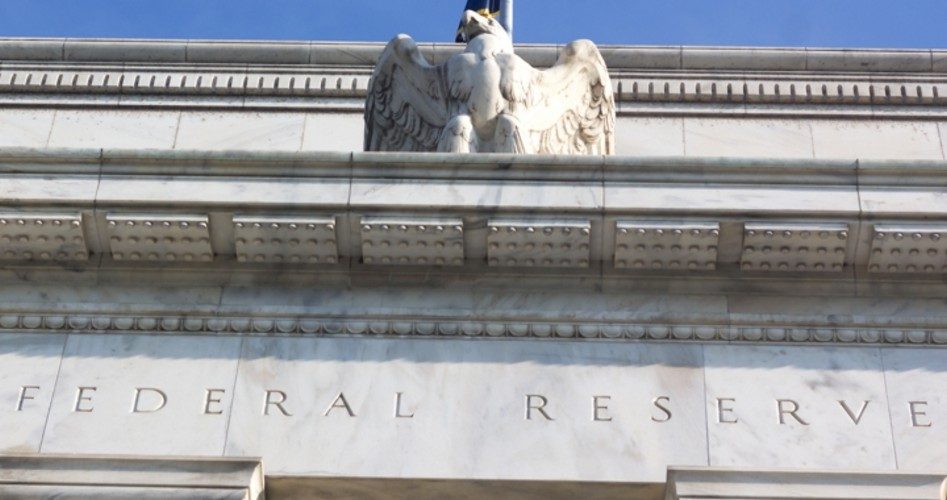
Wednesday’s selloff on Wall Street took away all the gains stocks had made since the first of the year, turning the major stock averages — the Dow Jones Industrial Average, the S&P 500 Index, and the Nasdaq Composite — negative for the year.
Stock watchers blamed everyone and everything except the real culprit for the selloff: trade “disputes,” China’s intransigence, the murder in Saudi Arabia, the rise in oil and gas prices, the “migrant caravan” headed for the southern border, the rash of fake bomb attacks, fill in the blank.
Those watchers came closer to placing the blame more accurately, however, when concerns about the housing market hit the tape. The Commerce Department reported that sales for the month of September came in at 553,000, which is 5.5 percent below the August rate (which itself was revised downward), and 13.2 percent below the 637,000 sales reported a year ago. The mantra goes like this: Housing starts reflect a growing economy as nearly every part of the economy is impacted by it, since construction workers, electricians, plumbers, architects, bankers, and suppliers of all manner of appliances (from stoves to furnaces, from furniture to mattresses), are all part of the supply chain. If anything gets in the way, the chain slows down and sales of the finished product slow down.
Just as the Fed intended. The New American noted this in two articles in the early part of October: “Fed Set to Spoil the Party and Dampen the Trump Economy,” and “Is the Fed Trying to Kill the Trump Economy?”
The first selloff in early October was triggered by the rise in the 10-year Treasury note — which jumped from 3.06 percent to 3.26 percent in just three days. This is the Treasury security most sensitive to changes in the Fed Funds Rate, the primary lever the Fed has in its arsenal to cool off the economy. It uses that “lever” when it deems, in its independent and unrestricted opinion, that the party is getting too rowdy. Chairman Jerome Powell gave notice during a week-long blitz of the media early in the month that the Trump economy was “remarkably positive” and its outlook “particularly bright.”
That was the early warning that the party was getting too noisy and something had to be done about it. Wall Street reacted with a 500-point sell-off on the Dow on Friday, October 5.
The market began to rebound, gaining back much of the loss, when the Commerce Department dropped its bomb: Housing starts were off because of — guess what? — rising interest rates.
It didn’t matter that 80 percent of the S&P 500 companies reported earnings exceeding expectations. It didn’t matter that unemployment is at decade lows, or that real wages were rising. The Fed has determined, in its infinite wisdom, that the party was getting too rowdy. It was long-time Fed chairman William McChesney Martin who said that the Fed’s job is to “order the punch bowl removed just when the party was really warming up.” A more accurate assessment is from Rudi Dornbusch, the German economist who spent most of his working life in the United States, who said bluntly: “None of the U.S. [economic] expansions of the past 40 years died in bed of old age; every one was murdered by the Federal Reserve.”
Ed Yardeni, president and chief investment strategist at Yardeni Research, is optimistic that the selloff is temporary, only a “panic attack,” and that the economy remains strong despite the Fed’s attempts to slow it down. In fact, said Yardeni, the selloff is making stocks more attractive: “Valuation multiples have dropped sharply this month, making stocks [more] attractive.… [It is more of a panic attack] rather than the beginning of a bear market; we believe that the bull market [in stocks] will continue into next year. The next relief rally should be triggered by continued signs of economy growth combined with subdued inflation [i.e., price increases].”
That “relief rally” may already have begun. In the first three hours of trading on Thursday, stocks had regained half the losses sustained on Wednesday. This is to be expected, according to Rick Borden of Equius Partners: “Like the ebb and flow of the tide, the next bear market is as inevitable as the bull market that will follow it.”
For the record, Equius’ studies have shown that the average bear market lasts just over a year, while the bull market that follows it lasts more than eight years. Even if the Fed succeeds in tipping stocks into a bear market, most investors will be served well to wait it out and enjoy the bull market that follows it.
Ron Paul, author of End the Fed, is correct: The Fed is both corrupt and unconstitutional. What most people don’t realize is that the Fed — created by international bankers such as the Morgans and Rockefellers at a private club off the coast of Georgia — is actually working against their own personal interests. Until that happy day when the Fed is abolished, citizens, taxpayers, workers, and investors will have to navigate their economic futures that are being manipulated by the Fed.
Image: amedved via iStock / Getty Images Plus
An Ivy League graduate and former investment advisor, Bob is a regular contributor to The New American magazine and blogs frequently at LightFromTheRight.com, primarily on economics and politics. He can be reached at [email protected].
Related articles:




